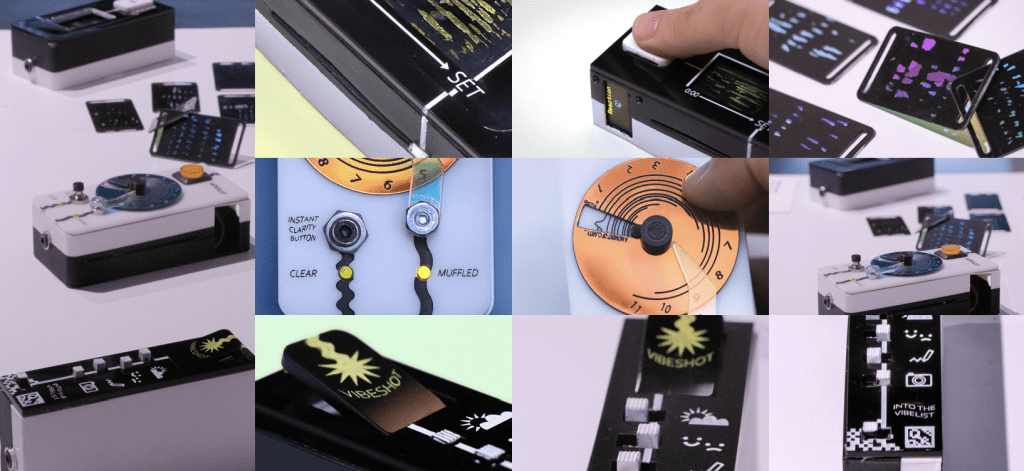
Publication
- Ghanem, M. & Yoon, J. (2022). Variapsody: Creating three interactive music listening experiences that use diversified positive emotion regulation strategies to promote subjective well-being. CHI’22 Late-Breaking Work on Human Factors in Computing Systems (CHI LBW 2022). ACM. New Orleans, LA, USA. Download
Over the past decade, initiatives to design for subjective well-being have gained increased attention and momentum in design research. These initiatives often draw from positive psychology to explore ways of making Positive Psychology Interventions (PPIs) more effective through technology. This paper explores how a mix of tangible and digital technology can realize activity-focused, diverse emotion regulation for its users. We propose that emotion regulation strategies can serve as a principle for designing technology that encourages users to savor, modify, reassess, or commemorate their experiences. By centering the design around music listening experiences, the paper demonstrates how users can be supported to overcome motivation hurdles that get in the way of frequent engagement with a PPI. Variapsody is a device that enriches music listening with three features, each deploying a different set of emotion regulation strategies that make the experience more enjoyable and meaningful. Variapsody’s regulatory diversity offers users the choice of how to approach music listening and expands their repertoire of ER strategies. The first feature, Reaction Tile, inscribes users’ reactions to music onto a tangible, domino-sized tile to encourage them to savor the music. The second is Monofilter, which purposefully muffles the salience of background music while working on a cognitively demanding task. Vibelist is the third feature that helps users capture and revisit the context of music listening experiences in a digital collage. The paper discusses the lessons learned and future research opportunities.